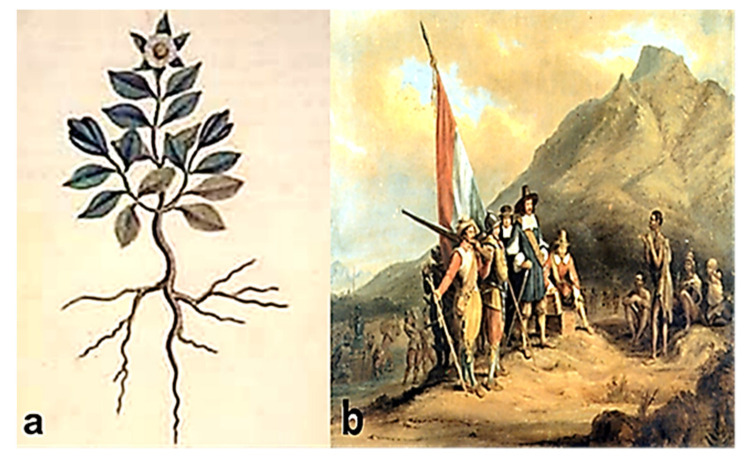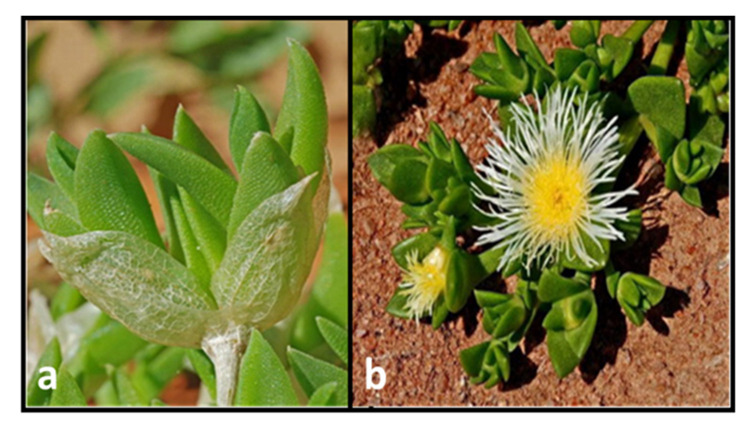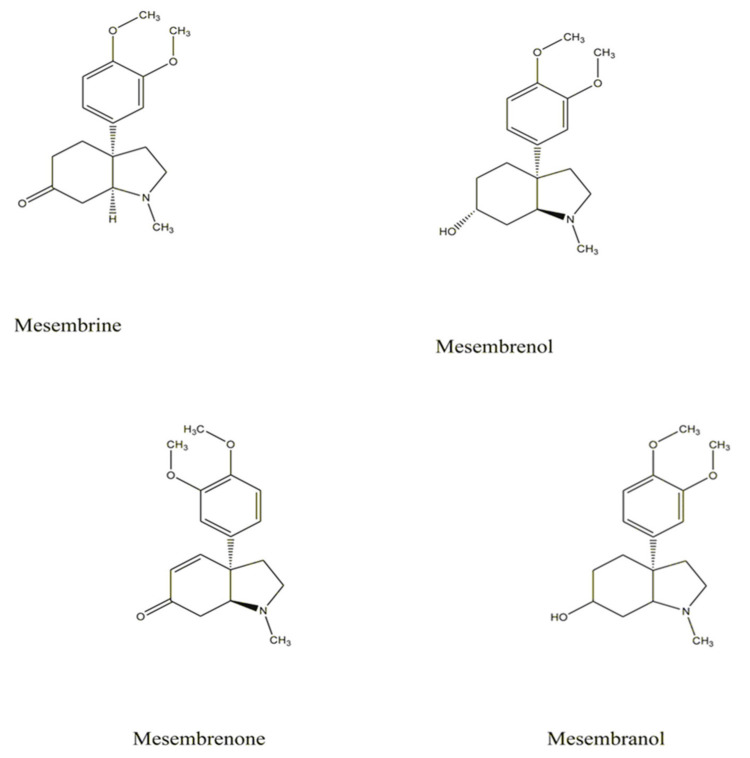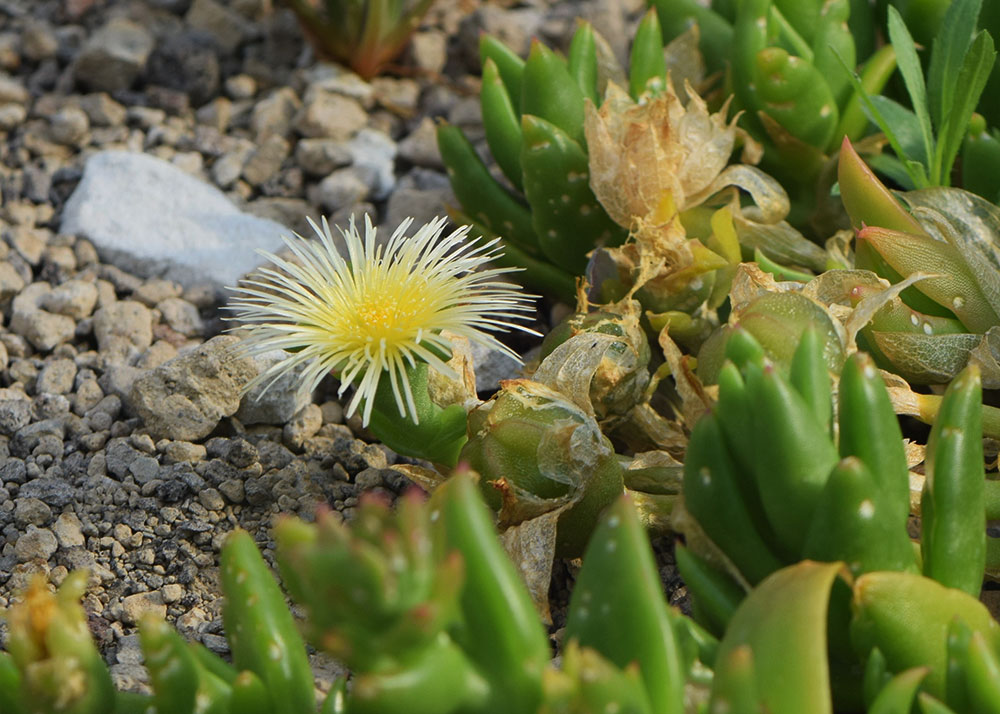Biological and Pharmaceutical Properties of Sceletium tortuosum
Sceletium tortuosum (L.) N.E.Br. (Mesembryanthemaceae), commonly known as kanna or kougoed, is an effective indigenous medicinal plant in South Africa, specifically to the native San and Khoikhoi tribes.
Share This Story, Choose Your Platform!
Sceletium tortuosum (L.) N.E.Br. (Mesembryanthemaceae), commonly known as kanna or kougoed, is an effective indigenous medicinal plant in South Africa, specifically to the native San and Khoikhoi tribes. Today, the plant has gained strong global attraction and reputation due to its capabilities to promote a sense of well-being by relieving stress with calming effects. Historically, the plant was used by native San hunter-gatherers and Khoi people to quench their thirst, fight fatigue and for healing, social, and spiritual purposes. Various studies have revealed that extracts of the plant have numerous biological properties and isolated alkaloids of Sceletium tortuosum are currently being used as dietary supplements for medicinal purposes and food. Furthermore, current research has focused on the commercialization of the plant because of its treatment in clinical anxiety and depression, psychological and psychiatric disorders, improving mood, promoting relaxation and happiness. In addition, several studies have focused on the isolation and characterization of various beneficial bioactive compounds including alkaloids from the Sceletium tortuosum plant. Sceletium was reviewed more than a decade ago and new evidence has been published since 2008, substantiating an update on this South African botanical asset. Thus, this review provides an extensive overview of the biological and pharmaceutical properties of Sceletium tortuosum as well as the bioactive compounds with an emphasis on antimicrobial, anti-inflammatory, anti-oxidant, antidepressant, anxiolytic, and other significant biological effects. There is a need to critically evaluate the bioactivities and responsible bioactive compounds, which might assist in reinforcing and confirming the significant role of kanna in the promotion of healthy well-being in these stressful times.
1. Introduction
In a developing country such as South Africa, a feasible dual health care system is practiced by incorporating current Western medical practice with traditional medical health care. Approximately 80% of the world’s population and 52% of South Africans, especially blacks, use traditional medicine and practices for primary health care. In addition to the fact that it is part of their cultural heritage, the traditional health care system provides an affordable, personalized, and culturally accepted alternative to the costly modern clinical system. The South African health care system is overwhelmed by the private and public health care system, however, the ratio of traditional healers to allopathic doctors is estimated at 10 to 1.
Indigenous medicinal plants have been a key resource used for centuries in various native tribes around the world. Most South Africans use plants to treat physical and psychological illnesses/issues. Furthermore, South Africa is rich in traditional healing methods and diverse fauna and flora, with approximately 30,000 flowering plant species, which account for 10% of the world’s higher plant species. There has been a universal trend toward the use of medicinal plants for various human diseases and aliments for social and economic benefits. Bioactive compounds such as alkaloids, phenolic, flavonoids, tannins, glycosides, saponins, and terpenoids have been isolated from medical plants.
Sceletium tortuosum is no expectation, as extensive research has been conducted on the chemistry of S. tortuosum alkaloids as the plant contains a large profile of alkaloids such as mesembrine, mesembrenone, mesembrenol, tortuosamine, and chennaine, and alkaloids have an effect on a number of central nervous system targets. For example, an ethanolic extract of S. tortuosum with purified alkaloids mesembrine, mesembrenol, and mesembrenone showed inhibitory effects on serotonin (5HT) reuptake and phosphodiesterase4 (PDE4) activity. S. tortuosum is a succulent, flowering plant casually known as kougoed or kanna, indigenous to South Africa. The plant is a member of the Mesembryanthemaceae family. In addition, Sceletium is well-known as “Kanna, Channa, and Kougoed”, meaning something to chew or is chewable. The plant is traditionally known for its ability to elevate mood, reduce stress, tension, anti-anxiety and its tranquilizing properties.
Furthermore, it is used for illnesses such as abdominal pains, toothache, and some people chew, smoke, or use it as tea or snuff mostly for pressure. The antidepressant and anxiolytic clinical effects of S. tortuosum have been found both in case reports and more recently, double-blind studies. Anecdotal records reveal that the Khoikhoi and San people have used this plant since ancient times as an essential part of the indigenous culture and materia mediac. Hunter gatherers and pastoralists use S. tortuosum for the endurance of hunting attacks and management of stress that comes with living in dry and challenging environments of Bushman land, Namaqualand, and the Karoo.
Bennett and colleagues reported that S. tortuosum showed potent anti-inflammatory capacity in the context of chronic disease. Furthermore, high levels of mesembrine extracted from S. tortuosum displayed potential cytoprotective and mild anti-inflammatory properties in the setting of acute inflammation in the peripheral compartment. In addition, it has also been proved to target specific enzymes in the adrenal cortical steroid synthesis pathway and reduce glucocorticoid synthesis. In terms of diabetes and obesity, this is significant since the etiology of both conditions is linked to chronically elevated pro-inflammatory cytokine and glucocorticoid levels.
S. tortuosum including other species have become attractive commodities in the commercialization of South African medicinal plants. Various forms of the plant are currently being sold, for example, tea bags, often mixed with Red Bush Tea (Aspalathus linearis), or Honeybush tea (Cyclopia spp.), are purchased in South African supermarkets. Extracts of the plant are accessible in raw powdered plant material, tablets, and capsules, which are frequently traded over the Internet and individuals use it to improve their sense of well-being and reduce stress. Furthermore, S. tortuosum plants provide an effective, efficacious, and affordable natural treatment for veterinary and pharmaceutical purposes. Historic reports have shown that Sceletium plants are culturally used by traditional healers for psychological, spiritual, and medical functions. Thus, the purpose of this review was to establish a brief historical overview, origin, phytochemistry as well as a comprehensive outlook in recent pharmacological, veterinary, and medicinal advances with regard to a chewable South African succulent genus, Sceletium.
2. Methodology Framework
Research studies/papers were collected using a wide range of database platforms such as Scopus, PubMed, Google Scholar, Web of Science, and ScienceDirect. Keywords such as Sceletium tortuosum, kougoed, well-being, and biological properties were used to search for relevant studies. A total of 1040 scientific papers were retrieved from Google Scholar and a minimum of 38 from PubMed. Due to the limited number of studies, there was no restriction on the year of publication. However, our search focused on in vitro culture studies, animal studies as well as human investigations. Thus, the studies were linked back to the traditional uses of the plant for therapeutic benefits. Abstracts were primarily screened before reviewing the full publications.
3. History, Description and Distribution of Sceletium
The oldest written evidence of Sceletium has been found on a painting done by Simon van der Stel in 1685, approximately 435 years old. According to historical records, the plant is perennial, short-lived with creeping stems and overlapping pairs of leaves that have glistening water cells (bladder cell idioblasts) on their surfaces. In 1662, the Dutch colonial administrator, Jan van Riebeeck (Figure 1b) traded with native tribes in Southern Africa, exchanging sheep for ‘kanna’. It was identified as a ginseng-like herb by the European population. However, prior to this, South African pastoralists and hunter-gatherers had been using the plant as a mood-altering substance from prehistoric times.

S. tortuosum is a small succulent plant with trimmed branches that thicken along and become slightly woody with age. The succulent plant consists of water cells. These are visible on the leaves with curved tips entailing three to five main veins. Sceletium has a climbing pattern and the succulent leaves have “bladder cells” or idioblasts. Furthermore, the dicotyledonous flowering part of the plant comprises whitish to pale yellow, sometimes, pale pink petals supported by pedicellate (Figure 2b). The calyx contains four or five sepals. Imbricate leaves with incurved tips represent a very distinct characteristic, keeping in mind that in its hygrochastic state, the fruit opens up. The Sceletium genera belongs to the family Aizoaceae and subfamily Mesembryanthemoideae, recognized in 1925 by N.E. Brown. When the leaves are dry, S. tortuosum has a skeleton-like structure (skeletonized).

Hence, the botanical name, Sceletium, comes from the Latin word “sceletus”, due to the prominent leaf veins. Sceletium genera consists of eight species, known for their persistent dry leaves that become skeletonized. The Sceletium genera, although native to southwestern parts of South Africa, has attracted global attention since it enhances a sense of well-being and healing properties for anxiety, depression, and stressed individuals. Its geographical distribution is from the Namaqualand arid region of Namibia to Montagu in the Western Cape Province of South Africa, near the Western Little Karoo through to Aberdeen of the Eastern Cape Province of South Africa. Sceletium genera are succulent plants that flourish in sandy loam soil in predominantly dry environments under shrubs in partial shade. In the dry season, the leaves dry out, enclosing young leaves to protect them against unfavorable environmental conditions. In addition, they propagate extremely well in rockeries and pots.
4. Phytochemical Constituents of Sceletium
In 1898, Meiring was one of the first to study the phytochemical components of the S. tortuosum crude alkaloid mixture. Historic investigation by Zwicky (1914) [20] also proved that various alkaloids such as mesembrine and mesembrenine were isolated from S. tortuosum and S. expansum. Sceletium alkaloids was further studied for the extraction and synthesis of mesembrine, mesembrenine (=mesembrenone), mesembrinol (=mesembranol), and the possible artifact chinnamine. Recently, several studies have shown high concentrations of alkaloid, specifically mesembrine as well as other Sceletium alkaloids extracted from Sceletium plants. Expert research has confirmed that the principal active component in S. tortuosum is mesembrine. In-depth research established that genus Sceletium produces indole alkaloids, for instance, mesembrenol, mesembranol, mesembrine, and mesembranone, which has a chemical formulae designated in U.S. Pat. No. 6288104.

Further research revealed that U.S. Pat. No. 6288104 mesembrine was the only alkaloid detected in the leaves of S. tortuosum. Patnala and Kanfer performed high-performance liquid chromatography (HPLC) with UV, coupled with online mass spectroscopy, using six investigated Sceletium plants including S. tortuosum. Chemical analysis showed that mesembrenone and mesembrine were present in high levels, however, mesembranol and epimesembranol were detected in low levels in S. expansum. S. strictum eluded several alkaloids such as mesembrine, mesembrenone, and either 4′-0-demethylmesembrenone or 4′-0-demethylmesembrenol.
Shikanga and co-workers conducted a study on 151 wild S. tortuosum plants obtained from 31 areas in the Western Cape Province of South Africa. The researchers used gas chromatography-mass spectrometry (GC-MS) analysis in the chemical investigation of acid/base extracts. The results showed unpredictability in the content of mesembrine-type alkaloid. Zhaoa and colleagues used proton nuclear magnetic resonance (1H-NMR) spectroscopy of methanol extracts and ultra-performance liquid chromatography-mass spectrometry (UPLC-MS) of acid/base extracts to determine the chemotypic distinctions in S. tortuosum in two locations in South Africa. Promising findings have been reported for pinitol, Sceletium alkaloids, and two alkylamines discovered for the first time from S. tortuosum. S. tortuosum is a miracle and mood-elevating plant used for the treatment of anxiolytic agents, without disregarding its different antimicrobial properties.




